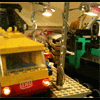
TUTORIAL Replace bulb on 12v light brick
By
bricks n bolts, in LEGO Train Tech
-
Recently Browsing 0 members
No registered users viewing this page.

By
bricks n bolts, in LEGO Train Tech
No registered users viewing this page.